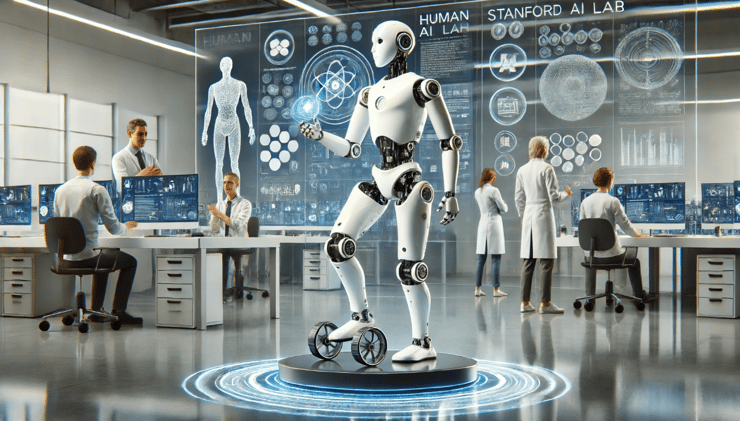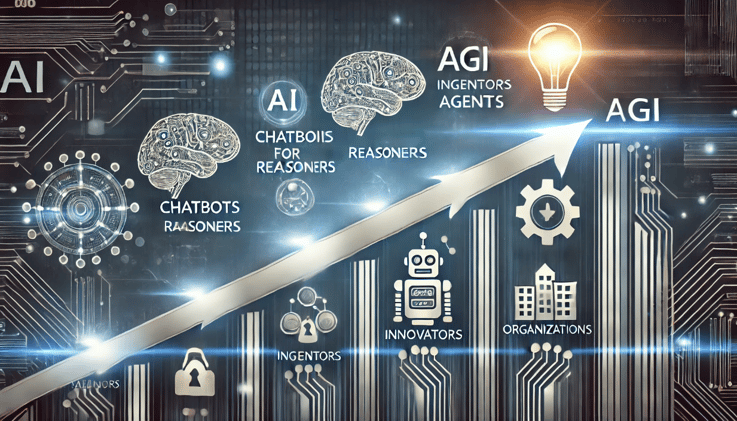In a groundbreaking development, the Stanford Artificial Intelligence Lab (SAIL) has introduced HumanPlus, an innovative system that empowers humanoid robots to autonomously learn and execute tasks by mimicking human actions. This pioneering technology is poised to transform the field of robotics and artificial intelligence, with far-reaching implications for industries ranging from healthcare to manufacturing.
A New Era in Robot Learning
Traditionally, robots have relied on pre-programmed instructions to perform specific tasks. However, this approach has limitations, as it restricts a robot’s ability to adapt to new situations or learn from experience. HumanPlus seeks to overcome these constraints by allowing robots to acquire skills and knowledge through observation and imitation.
The Science Behind HumanPlus
HumanPlus is the result of extensive research in cognitive robotics, machine learning, and human-computer interaction. The system leverages advances in deep learning and computer vision to enable robots to recognize and replicate human actions with remarkable accuracy.
At its core, HumanPlus employs a novel approach known as imitation learning, which enables robots to learn from observing humans performing tasks. By analyzing the actions of a human demonstrator, the robot can infer the underlying intentions and goals behind the task, allowing it to refine its own performance over time.
How HumanPlus Works
The HumanPlus system comprises three primary components:
Human Demonstrator
A human operator provides demonstrations of specific tasks, performing them in a way that is natural and intuitive for humans. The robot observes these actions through computer vision systems, capturing detailed information about the task, including gestures, postures, and manipulations.
Robot Imitation Module
The imitation module is responsible for processing the observed human actions and generating a robot-specific representation of the task. This involves analyzing the kinematics, dynamics, and control aspects of the human motion, allowing the robot to accurately replicate the action.
Learning and Adaptation Module
Once the robot has imitated the human demonstration, it enters an iterative learning phase, during which it fine-tunes its performance through trial and error. By continuously refining its actions based on feedback from sensors and reward functions, the robot adapts to new situations and develops increasingly sophisticated skills.
Applications of HumanPlus
The potential applications of HumanPlus are vast and varied:
Healthcare
HumanPlus can be used in healthcare settings for tasks such as physical rehabilitation, patient care, or even surgery assistance. Robots trained through imitation learning can develop the dexterity and precision required to perform complex medical procedures.
Manufacturing
In manufacturing environments, HumanPlus robots can learn to perform assembly tasks with high accuracy, reducing production time and increasing efficiency. This technology also has implications for industries like logistics and supply chain management.
Education and Research
HumanPlus offers new opportunities for educational and research institutions to explore human-robot collaboration, fostering a deeper understanding of cognitive robotics and its applications.
Conclusion
Stanford AI’s HumanPlus system represents a significant breakthrough in the field of artificial intelligence, opening up unprecedented possibilities for robot learning and task execution. By harnessing the power of imitation learning, robots can now acquire skills and knowledge that were previously inaccessible through traditional programming methods.
As research and development continue to advance this technology, we can expect to see HumanPlus applications across various industries, transforming the way tasks are performed and paving the way for a future where robots work alongside humans in harmony.




